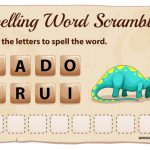What rhymes with ‘Rattle’? Answer: ‘Tattle’!
Not only does Tattle rhyme with Rattle, but it is eerily similar to it. Similar, in the sense that both ‘Rattle’ and ‘Tattle’ involve making ‘Noise’ of some kind or the other?
In case you’re wondering, ‘What does Tattle mean?’, it is this: Idle Gossip. It’s true, the amount of ‘noise’ that can be created by a person tattling, is enough to cause mayhem in the life of the person who is being ‘tattled about.’
As adults, we all know just how detrimental that Gossiping can be. The idea of their Kids tattling, is something that no Parent ever wants to entertain. It can cause friendships to break, not only between the children, but the parents of the kids, too!
Luckily for you, in this article we will show you how to stop tattling in the classroom. We will discuss tattling examples, and explore ways in which we can stop kids tattling in Preschool.
If Idle Gossiping can be curbed at an early age, we will not have to worry about our children gossiping when they are adults!
Tattling vs Telling: Examples of Tattling
The one fact all parents must be cognisant of, is that sometimes their children might actually be reporting something ‘serious’ to them. This is called ‘Telling’, and is different from ‘Tattling’.
Let’s understand this better, by taking a close look at what the two really mean.
Telling This is when a child comes to you, to report that the situation they find themselves in is a precarious one. They are ‘telling’ you, in the hope that you might be able to help them out.
Telling Tattling is their telling you out of sheer meanness, that the other child has done something wrong. They are merely looking at getting the other child in trouble, by doing this.
Examples of Tattling and Telling
The below are some classic examples of Tattling and Telling.
Tattling: He touched my favourite Barnie toy!
Telling: He took my Barnie toy to his home.
As you can see, there is nothing wrong with the kid touching the toy in the Tattling example. Yet, the tattling child is hellbent on getting the other kid in trouble. However, if the kid is taking their Barnie toy away from them and to their own home without their permission, that’s a cause of concern!
How to Stop Tattling in Preschool
Now that we have understood the answer to the question ‘What does Tattle mean?’, it’s time to take a look at How to deal with Tattling in Preschool.
Focus on Problem-Solving
No kid is inherently Bad, even the one that Tattles! To do: Get children to understand that the next time they are placed in a situation where they find the need to tattle, they must take a step back. Tell them to assess the gravity of the situation, before deciding what to do. Sometimes, it’s only a simple problem that can be easily fixed, without having to resort to tattling.
Listen to them
When was the time you really ‘understood’ what your child is feeling? To do: Understand that there’s a reason why your child is compelled to indulge in tattling in preschool. Listening to them will help you gain access to the inner sanctum of their thoughts and feelings. That will help you better understand where they are coming from, and why they might be indulging in that tattling.
Understanding Common Conflicts
Sometimes, all children need is to be prepared for those Conflicts that might lead to their tattling. To do: Let’s consider the above example, of the kid who tattled because another child touched their toy. You can prevent a situation like that from ever arising, by exposing them to the following thought. Tell them that it’s only natural for other children to touch their toys when they are playing with them. That will work like magic, in preventing that tattling about something harmless.
Learning about Consequences
Children must see the ‘other side of the story’! To do: If your child has tattled, get them to sit down with you. Tell them to place themselves in the shoes of the other kid, and ask them: ‘How do you feel?’ When children do this, they will in all probability feel bad about their actions, and be wary about tattling the next time round.
Teach them the difference between Tattling and Telling
Of course we know the difference between Tattling and Telling, but do our children? To do: Tell your kids they must only come to you to report about another child, if there might be the possibility of ‘harm’ to them or someone else. In the eventuality that it is a harmless scenario, they must keep their thoughts about the other child to themselves.
Understanding they have Choices
Oftentimes, children feel that Tattling is the only solution! To do: There’s always a way around tattling. Like for instance, your child might be called a name they don’t like, by another child. Instead of running to you and tattling about that child, they must tackle the problem head-on. They could tell that kid, ‘I don’t like it when you call me that, so please don’t do it again.’ If the child still repeats it, they can then choose to unfriend them.
Getting to the Bottom of the issue
Sometimes, children seem to relentlessly tattle about a child in particular. To do: This is a moment that calls for your Intervention. When all the above examples have failed to solve the issue, you might need to step in. Especially when it’s related to someone your child actually cares about. Simply talking to them, might help get to the real ‘root’ of the issue, and fix the problem.
At EuroKids we believe that while Tattling is a normal response of children to situations in their lives, it is certainly one that can be prevented. By dealing with tattling, you are not only helping the child being tattled about, but your own child, too.















